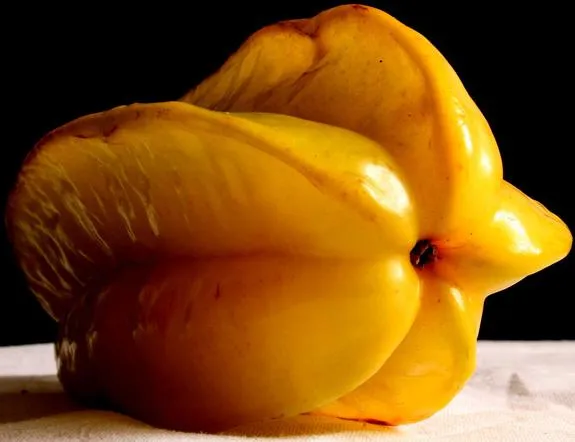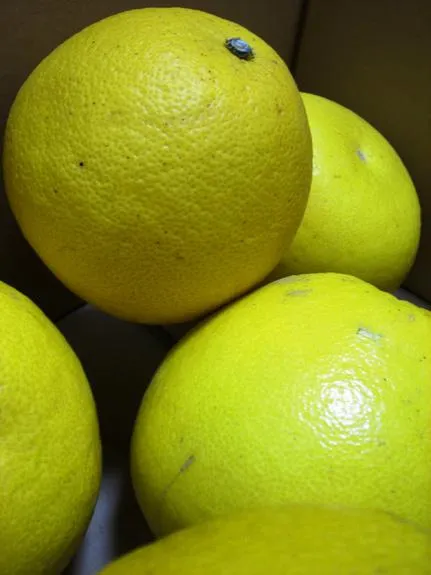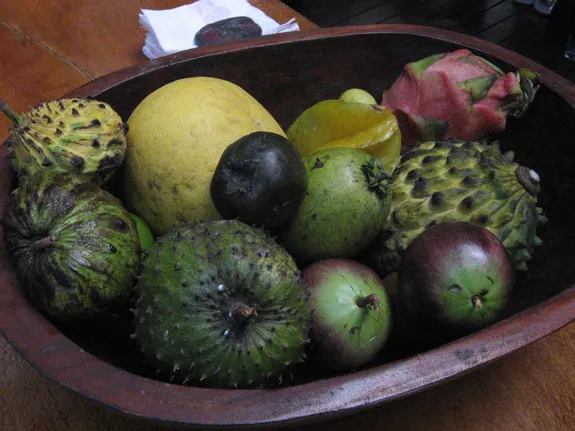All the Insane Australian Fruit You Can Eat
What the heck are black sapotes, carambolas and pomelo fruits?
/https://tf-cmsv2-smithsonianmag-media.s3.amazonaws.com/filer/20121002011054BlackSapote-tmb.jpg)
In recent decades, Americans have extended our fructivorous tastes beyond the trusty apple, orange and banana. But the world’s tropical rainforests hold fruits that are far more alien than once-novel mangoes and papayas. The Cape Tribulation Exotic Fruit Farm, on the northern tip of the Australian state of Queensland, is a living museum of esoteric produce, from Amazonian ice cream beans to Balinese snake fruit. I stopped by recently while traveling in Australia to find out whether I could learn to love a fruit that looks like it could bite me back.
Farmers Alison and Digby Gotts offer daily fruit tastings and tours of their organic orchards. While the rainforest of tropical Queensland is off the usual tourist tracks, the couple gets a fair number of curious foodies who come to sample such oddities as the rum-raisin flavored sapodilla and the star apple, packed with sticky purple latex.
On the afternoon of my visit, the day’s selection of ten exotic fruits was arranged in a rustic bowl, like a bizarre take on a Paul Cezanne still life. A couple of them were familiar from the novelty shelf at Whole Foods– the gaudy fuchsia dragon fruit and the chartreuse carambola, better known as a star fruit. Others were like nothing I had seen before.

It was with some hesitation that I tried the black sapote, a dark, wizened orb that looked like it was about ready to be thrown away. Leslie Munro, a local dragon fruit farmer who helps out with the tastings, explained that while the black sapote was picked green, it didn’t develop its distinctive “chocolate pudding” flavor until it had softened on the ground for a week or two. She passed slices around, and the tasters nibbled nervously. It took a little imagination, but the soft, dark brown flesh was reminiscent of a Jell-O pudding cup– if you had stirred mashed-up avocado into it.
Taste-wise, the rollinia stood out among the ten fruits I sampled. Its fearsome exterior, yellow with black scales, belied the pleasant, lemon meringue pie flavor of this South American native. Also popular with my fellow tasters was the pomelo, a sweet, juicy grapefruit relative the size of a volleyball.

My pick for weirdest fruit was the soursop, which looked like a dinosaur’s big green egg, or the mutant offspring of a crocodile and a pineapple. It tasted a little like lemonade, but with the texture of a cotton ball studded with big, slippery seeds. It makes good jam, Alison told us.
Exotic fruits are often the subject of health claims, and somewhere on this farm could lurk the next trendy superfood—see the açaí, a Brazilian palm fruit that rocketed to popularity a few years ago for its alleged antioxidant content. Digby Gotts has sent fruit samples away to Brisbane, the nearest big city, to have the nutrition content analyzed, but there is little existing research on their health effects, as many of these fruits are new to science.

Meanwhile, Alison and Digby have struggled to make most of their products marketable. Some trees fail to thrive in Queensland’s harsh environment. Many of the fruits are heavy and delicate, and thus hard to ship. Others are just too weird for the average shopper in Sydney or Brisbane, let alone Peoria. The fruit the couple has had the most luck with is the mangosteen, a dark purple fruit with a sweet white interior.
“They’ve survived the cyclones, they taste fantastic, and people pay good money for them,” Alison enthused.
For now, though, most of the Gottses’ varieties are available only from the farm or at a few grocery stores in the towns nearby. Unfortunately, you might just have to travel to the rainforest to get your fix of a juicy soursop or a divine rollinia.